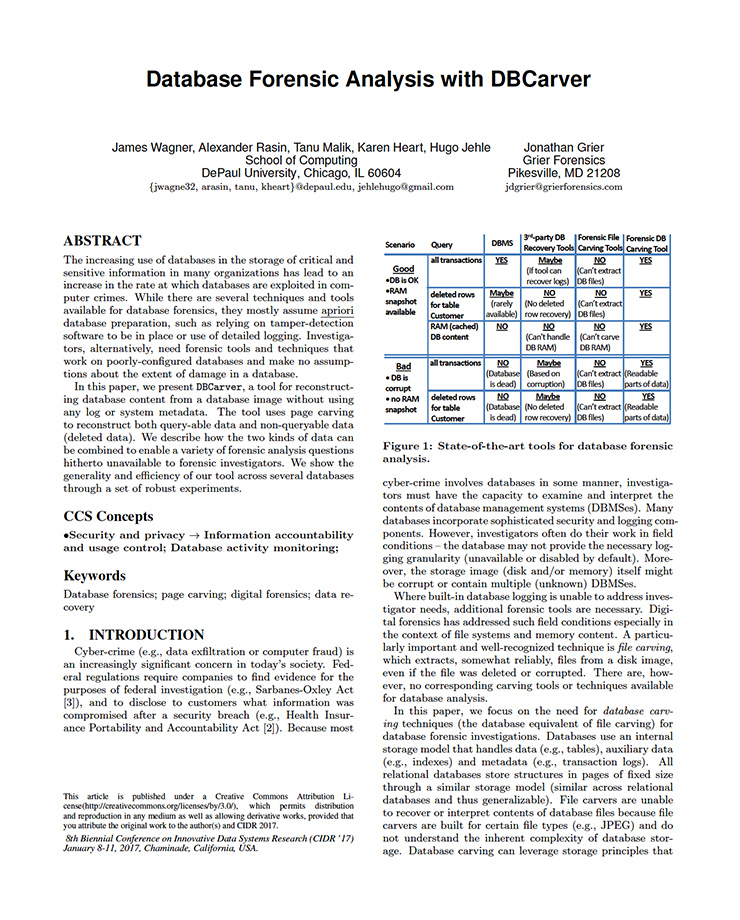The increasing use of databases in the storage of critical and sensitive information in many organizations has lead to an increase in the rate at which databases are exploited in computer crimes. While there are several techniques and tools available for database forensics, they mostly assume apriori database preparation, such as relying on tamper-detection software to be in place or use of detailed logging. Investigators, alternatively, need forensic tools and techniques that work on poorly-configured databases and make no assumptions about the extent of damage in a database. In this paper, we present DBCarver, a tool for reconstructing database content from a database image without using any log or system metadata. The tool uses page carving to reconstruct both query-able data and non-queryable data (deleted data). We describe how the two kinds of data can be combined to enable a variety of forensic analysis questions hitherto unavailable to forensic investigators. We show the generality and efficiency of our tool across several databases through a set of robust experiments.





